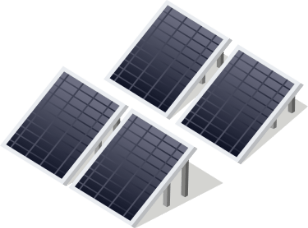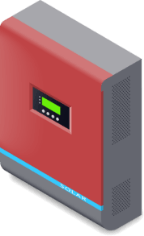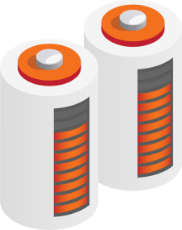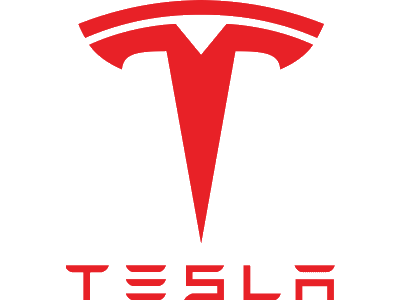LONGi Solar is the world's largest manufacturer of solar panels and has held this position for three years. In the solar industry, that's a Longi time. But they may not be number one for long. In 2022 they only produced 5% more panel capacity than their closest rival and that's not a long lead. But the odds aren't long they'll remain the top producer for the next few years.
This Chinese company became a solar giant by producing panels with a good combination of affordability and reliability. While some of their panels only come with a fairly standard 12 year product warranty, others are backed up with 25 years. They also produce one of the highest efficiency panels available.
Because they're reliable and good value for money, LONGi Solar panels are among those SolarQuotes recommends. I'd be fine with having them installed on my mother's roof. In fact, my co-worker, Anthony, did put them on his mum's roof.
Company History
LONGi Solar was founded in 2000. While I know it's hard to believe, the company wasn't named after Australian solar legend Jack "Longy" Long. Instead, it was named after Jiang Longji, a university president who died in 1966. The name choice makes it look like the young company was trying to curry favour with the Chinese government, but LONGi's founders insist it was just because he was a really cool dude.
Initially, LONGi produced silicon for electronics. In 2005 they began producing silicon for solar and in 2006 they had enough capacity to make around 1,000 tonnes a year. They then began climbing their way up the solar supply chain, starting with cutting the silicon ingots they made into wafers used for solar cells. In 2014 they purchased a solar panel manufacturing company and this completed their transformation into an enormous, vertically integrated company, involved in all major steps of solar panel production. They have continued expanding at a rapid rate and in 2021 also moved into producing equipment for hydrogen production.
Production
In 2022 LONGi shipped a massive 46.76 gigawatts of solar panels. Enough to generate around one-third of Australia's electricity consumption. Not bad for one year's output by a single company.
A little over half that production was sold in China and the rest was exported. In 2022 China installed 87 gigawatts of solar, which made LONGi panels 28% of this new capacity. So in that year, LONGi Solar was the largest single contributor to China's transition to renewable energy.
Monosilicon Only
Two types of silicon are used to make solar panels -- polysilicon and monosilicon. LONGi only makes and uses monosilicon. While more expensive than polysilicon, it has higher efficiency and has been gradually gaining market share. Almost all panels going on Australian roofs these days are monosilicon.
Production Locations
LONGi's headquarters are in Xi'an, a city of 13 million that's famous for flatbread in lamb soup and terracotta dudes. It's located in Shaanxi province, which has goddamned beautiful mountains that often can't be seen because of goddamn awful air pollution. The bulk of LONGi's silicon production occurs in this province.
Most of LONGi's production is in China but they also have factories in Malaysia and Vietnam. For years now they've been talking about opening facilities in India, but that project has been really slow to get off the ground. They've also announced they'll build a plant in Ohio in the United States, able to produce 5 gigawatts of panels a year.
LONGi Panels
Currently, in September 2023, LONGi Solar has 11 panels on their Australian site in their residential category. They are all called "Hi-MO" and range from Hi-MO4m, through Hi-MO5m, to Hi-MO6. For their two Hi-MO6 panels, they've also started tacking on nicknames, so there are "Scientist" and "Explorer" versions. I'm sure a scientist would appreciate having some quality PV on their roof, but I don't think an explorer would want to lug around a 20.8kg solar panel.
In May 2023, LONGi launched their Hi-MO7 panel. This large panel is aimed at the solar farm market and -- last time I checked -- isn't approved for use in Australia.
Up to 23% Efficiency
I'm writing this in September 2023 and, at this time, the efficiency of LONGi panels range from a not bad 18.9% to an awesome 23%. The Hi-MO6 "Scientist" panel can be up to 23% efficient, which makes it equal best with the SunPower Maxeon 6 panels for highest efficiency available.
If you have plenty of room on your roof for the solar system you want to install, then panel efficiency usually isn't an important consideration. But if you're trying to fit as much solar capacity as possible into a limited space, then high efficiency panels are very useful.
Fair To Wonderful Heat Resistance
Heat lowers the efficiency of solar panels. Choosing heat resistant panels can slightly boost their energy output. In practice, the benefit is usually small and amounts to less than 2% difference in overall generation, but every bit helps.
The loss of efficiency due to heat is given by a panel's "Temperature Coefficent of Pmax". For LONGi Hi-MO4 panels it's -0.35%/°C. This means for every degree Celsius above 25, the panels have their efficiency reduced by 0.35%. So if a panel was at 45°C it would only provide 93% as much energy as when it was 25°C. Hi-MO5 panels are slightly better and only decline in efficiency by -0.34%/°C.
While the Hi-MO4 and Hi-MO5 have better heat resistance than some panels, they are similar to most other good quality panels on the market. But the Hi-MO6 panels have excellent heat resistance and only lose -0.29%/°C. This makes them equal to SunPower Maxeon 6 panels, which have similar efficiency.
Warranties
Solar panels come with two types of warranties:
- Product warranties that guarantee the materials and workmanship.
- Performance warranties which promise a minimum level of performance over time.
With LONGi panels, they come down to two main choices:
- A 12 year or 25 year product warranty.
- A 25 year performance warranty that allows up to 0.55% capacity loss per year or a 25 year performance warranty that allows up to 0.4% capacity loss per year.
Product Warranties: 12 Years Vs. 25 Years
LONGi's Hi-MO4m panels all have 12 year product warranties. This isn't bad, but is nothing special these days.
Most of their Hi-MO5m panels have long 25 year warranties -- but watch out! This one appears to only have 12 years.
All the Hi-MO6 panels have long 25 year product warranties.
If you get LONGi panels with a 12 year product warranty, you're unlikely to have problems. But LONGi obviously believes their 25 year product warranty panels have a reliability edge. Because the price difference is modest, I definitely recommend ones with 25 year product warranties. The only time I'd normally recommend getting the shorter warranty panels is if their lower cost allows you to install a larger solar system.
Performance Warranties: 0.55% Capacity Loss Vs. 0.4%
The performance warranties of LONGi's Hi-MO4 and Hi-MO5 panels allow a 2% decline in their rated capacity during their first year, followed by a 0.55% decline in each subsequent year. This means by the end of their 25 year performance warranty, they will be at a minimum of 84.8% of their original capacity. This isn't bad, but isn't exceptional for well-made panels these days.
What is exceptional are their Hi-MO6 panels. These allow 1.5% capacity loss in the first year followed by 0.4% loss in each subsequent year. This means after 25 years they'll still have a minimum of 89.8% of their original capacity.
While it's definitely preferable to have a performance warranty with a lower loss rate, in practice it's likely to result in your system generating under 2% extra energy over 25 years. This isn't a large advantage, but if you want panels likely to still work well several decades from now, they'd be a good choice.
Making A Warranty Claim
The odds are good you'll never need to make a warranty claim on LONGi panels, particularly if you get ones with a 25 year product warranty. But if a problem does occur, the first person you should contact is the installer who provided them. If they're no longer around, you can contact LONGi Solar's Australian office directly:
LONGi Australia General Enquires: 02 8484 5805.
If you prefer to send an email, LONGi says they'll reply within 24 hours. Their email address is: [email protected].
100% Renewable Production By 2028
In 2020 LONGi committed to using 100% renewable energy by 2028. At that time their energy use was 42% renewable. In 2022 it was up to 47%. Obviously, they'll need to pick up the pace to hit the target, but with the amount of solar being installed in China, I have no trouble believing they'll meet their goal.
LONGi Hydrogen
LONGi has moved into producing equipment for hydrogen production, but only on a small scale at the moment. Their approach is to make electrolysers that have low efficiency but are cheap to make. This makes a lot of sense for a solar company working to ensure the world has plenty of low cost electricity during the day.
Financial Security
A long warranty isn't useful if the company it came from is no longer around to back it up. I expect a large company like LONGi will still be around well into the future, but it's not possible to be certain it won't disappear and render its warranties worthless.
The good news is there is plenty of evidence LONGi is currently financially secure -- or at least secure for a solar panel manufacturer. As of July 2023 they had been in PV-Tech's PV ModuleTech bankability report's highest category for three and a half years. This means they're one of the solar companies considered least likely to suffer bankruptcy or financial problems.
Unfortunately, it's always possible for a company's financial position to rapidly deteriorate. Many manufacturers are likely to face problems over the next couple of years thanks to falling panel prices. But I have a feeling LONGi will be around long-term. I don't have any specific evidence to back this up, it's just a feeling I have in my gut. Specifically, my longi-intestine.
A Recommendation
Because we consider them reliable and well-supported in Australia, SolarQuotes is happy to recommend using LONGi Solar panels. If you put them on your roof -- or your mum's roof -- you are very unlikely to need to make a warranty claim, especially if you use ones with a 25 year product warranty.







